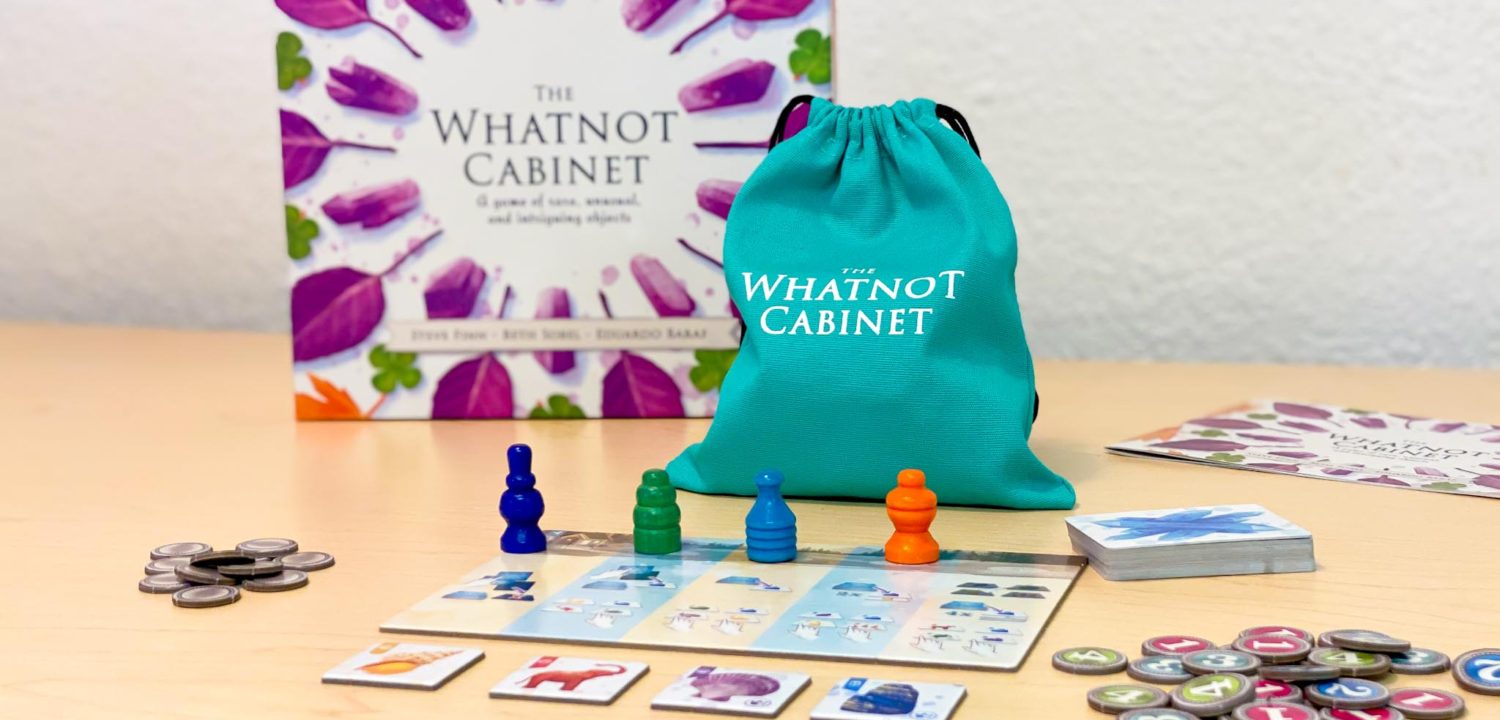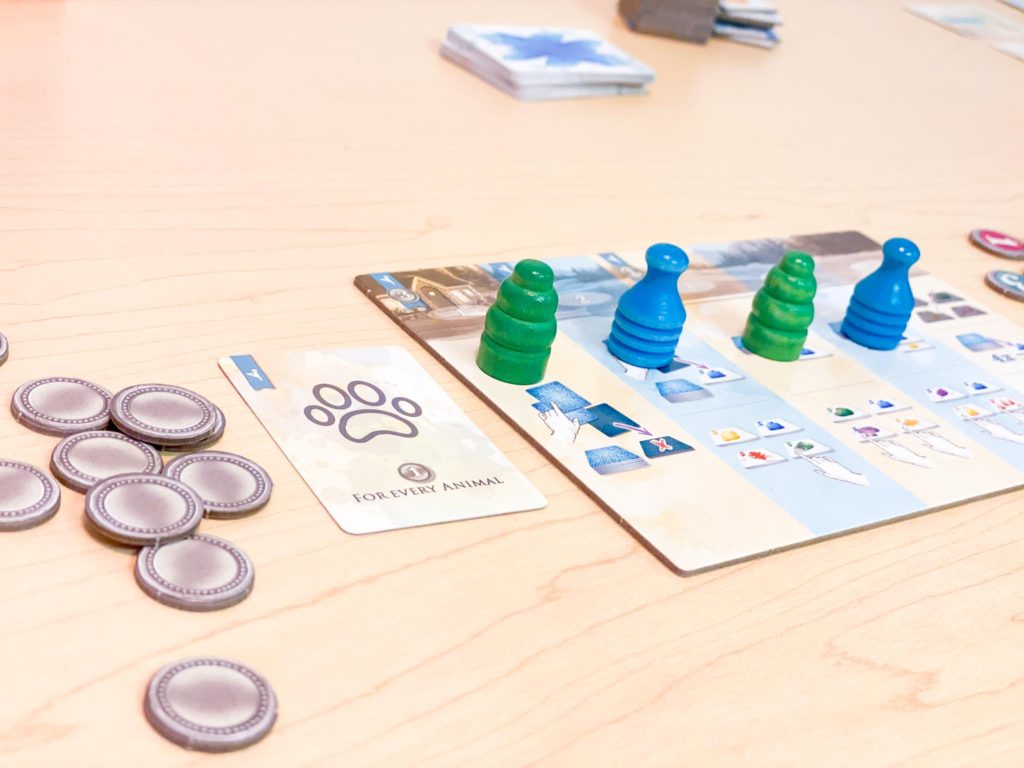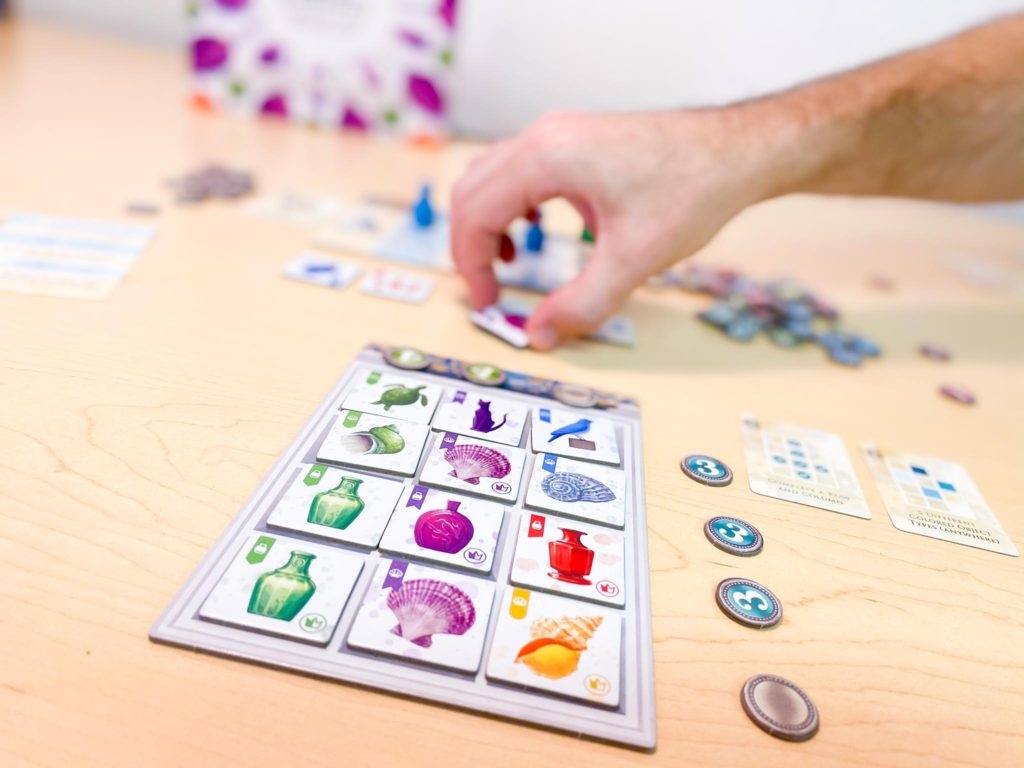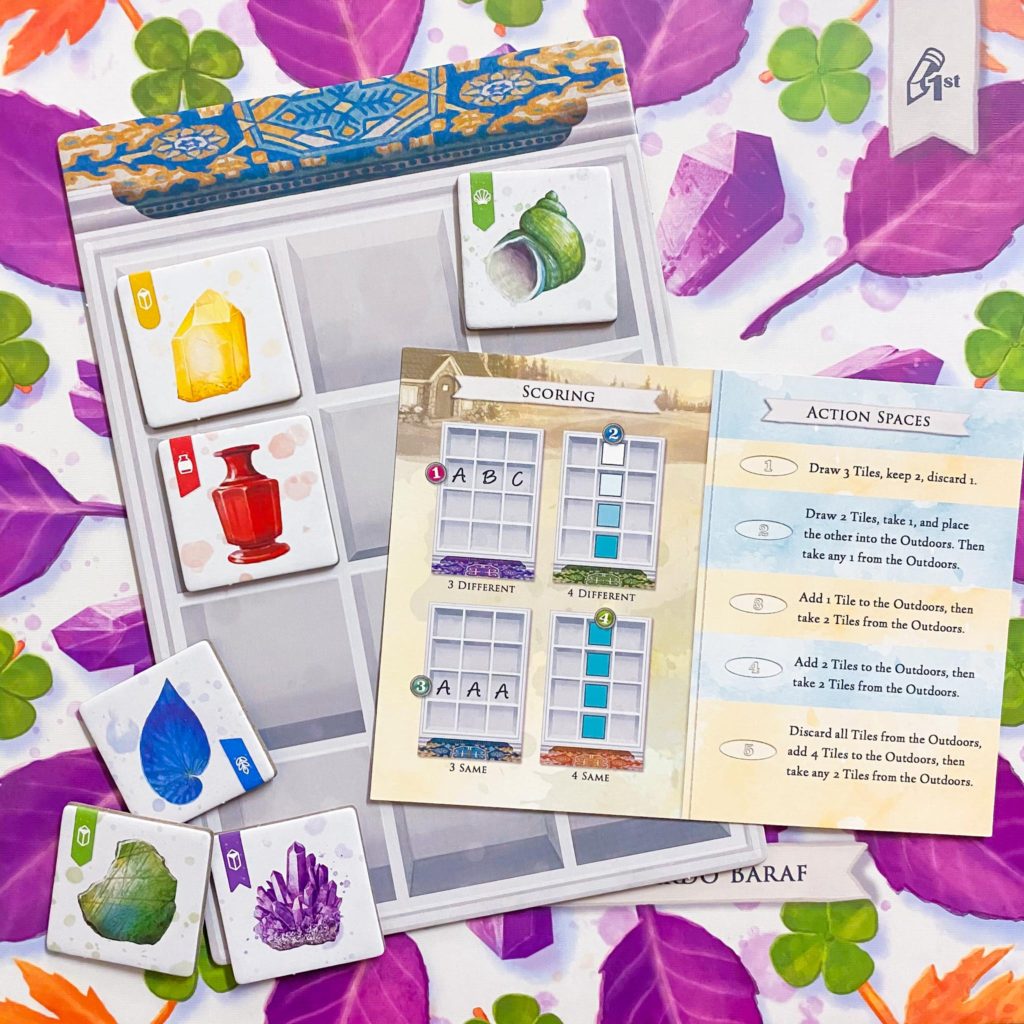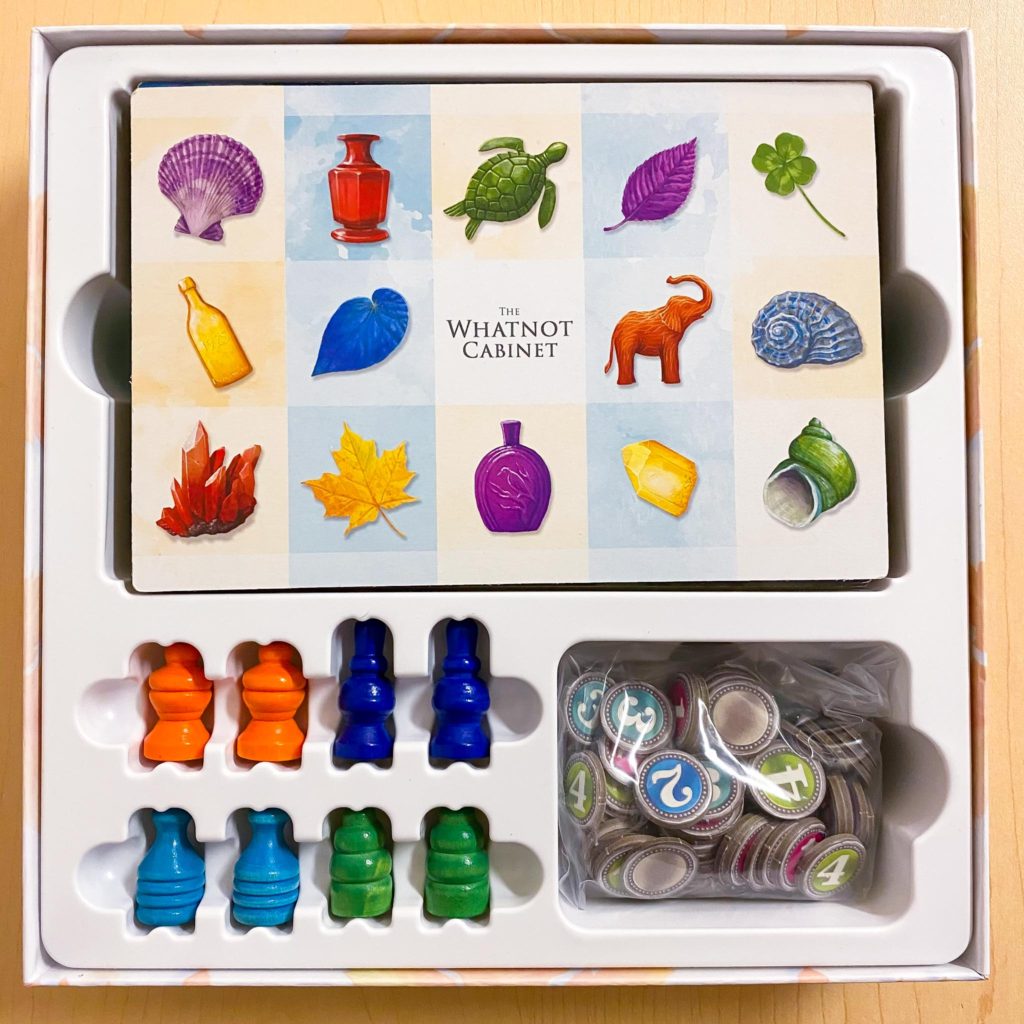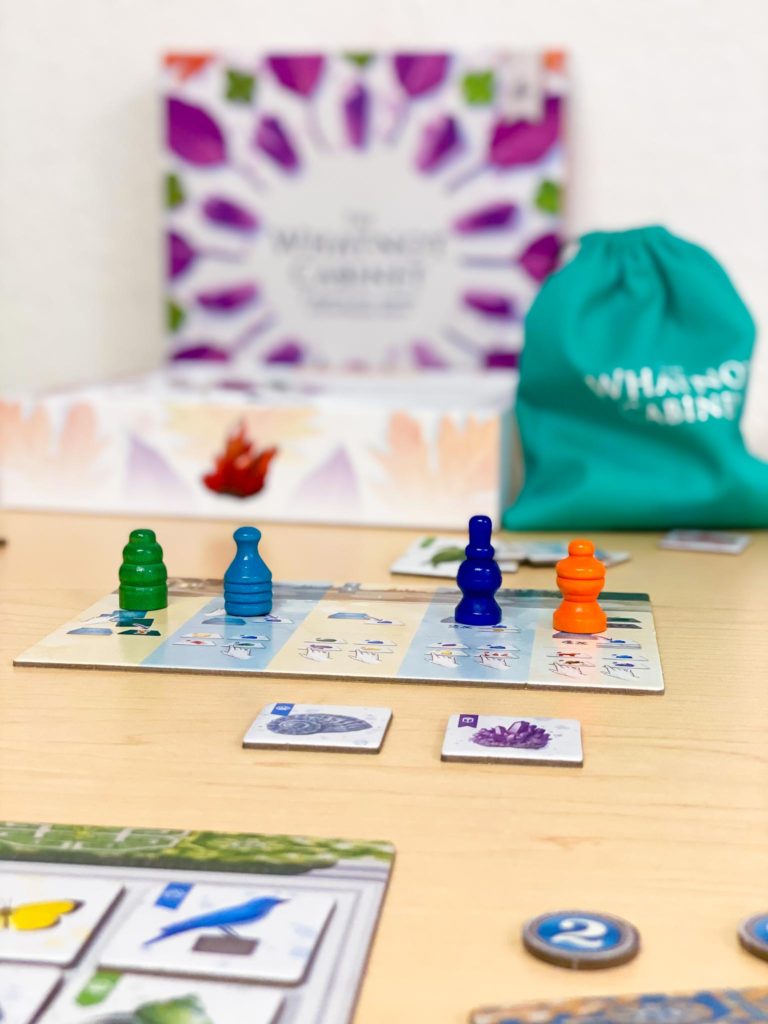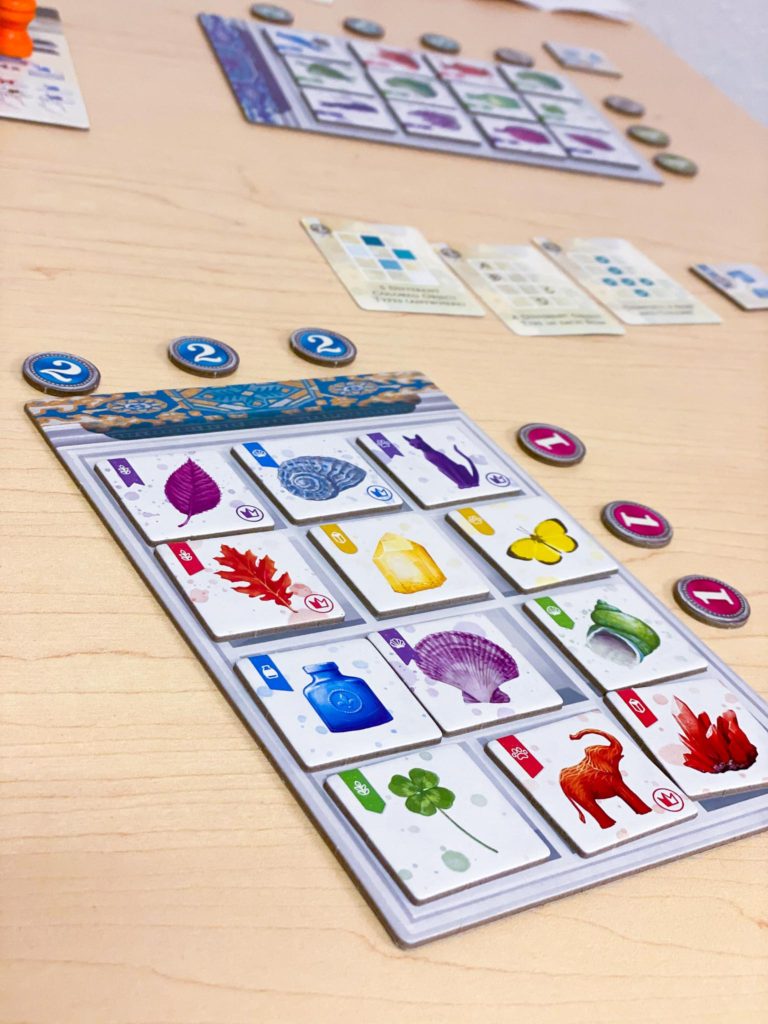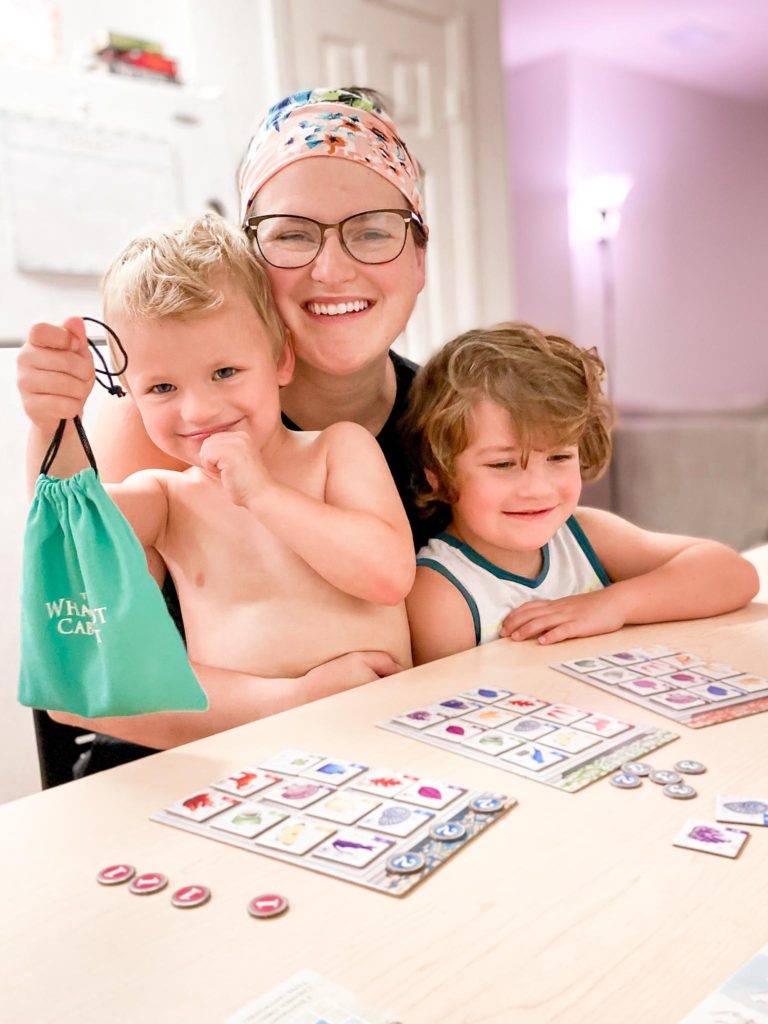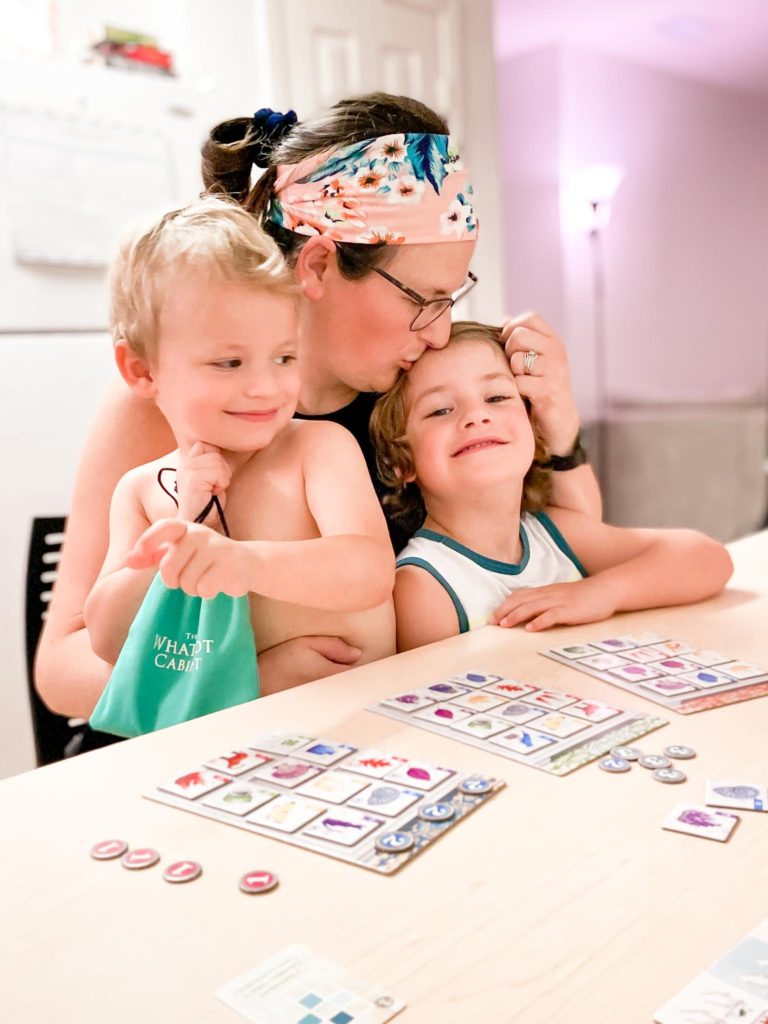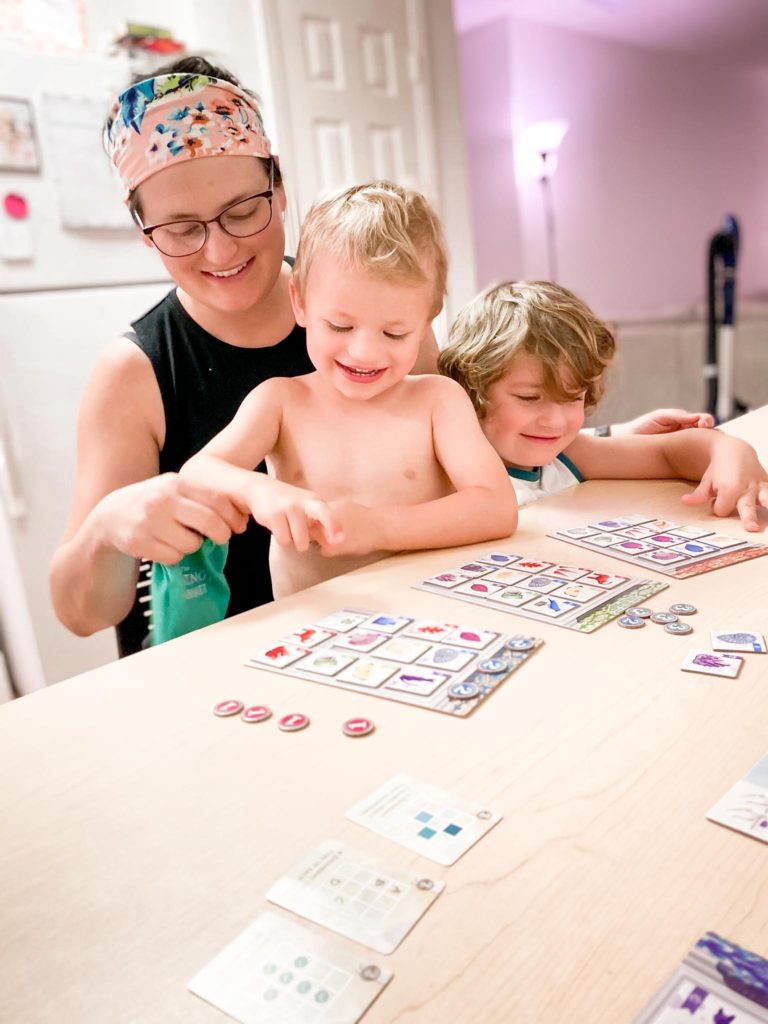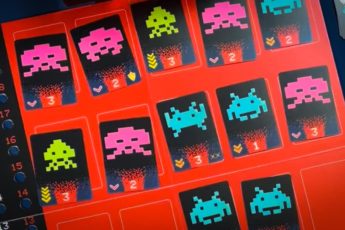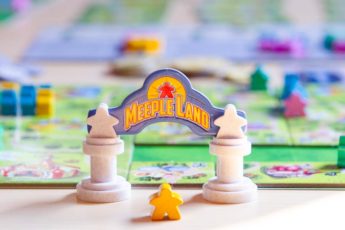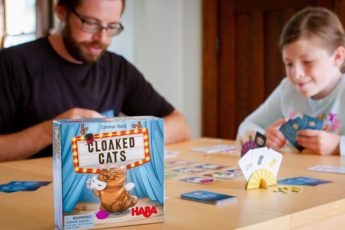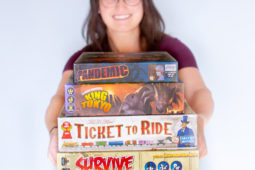The Whatnot Cabinet is a game that just speaks to you from the shelf. With gorgeous art and eye catching colors, I find myself always wanting to pick it up and examine it off the shelf. Which is pretty fitting for a game all about collecting intriguing items!
This light set collection game has been enjoyed by nearly every member of our house, young and old, and we think you might like it, too!
How Do You Play The Whatnot Cabinet?
The Whatnot Cabinet is a tile placing game played over a series of rounds. Each round, players take turns by placing 2 Curio Tiles into their Cabinet.
Players use their player pawn to a select an available action from the Journey board. Once an action is selected by a player it is unavailable for the remainder of the round. Once a player has taken their action and acquired their two Curio Tiles, they’ll place them in their Cabinet and, if possible, score any column or row that were completed.
Points are earned for the different types of sets you have collected. A column or row can earn you anywhere from 0 – 4 points. You can earn points for sets that are comprised of objects of the same color, objects with all unique colors, objects of the same type, objects with unique types. If a row does not meet the criteria for scoring then it fails to score. Players can also earn points from being the first to meet the condition of curiosity cards.
At the end of the round, move their pawns from the actions selection area back to the Journey Board. This is determined based on the actions that the players selected during the round. If you chose the action furthest to the left, you will go first that round with each player next in line moving left to right following.
At the end of 6 rounds that players will all have a full curio cabinet and the game is over.
The player with the most points wins.
What Do We Think?
The Whatnot Cabinet is a beautiful, simple, and thoughtful new gateway game!
This is a game I see myself reaching for when my folks come over. The rules are simple while the choices are interesting. It’s a very unassuming game that is perfect for anyone who prefers a more streamlined experience. Yet it has enough tough choices and strategic elements that it can also cater to the more experienced gamer.
We have found that the tightness in the decision making — having limited options and needing to find the ways to work best with what is available — provides that perfect puzzle feel that keeps us wanting to play again and again.
For what is, at it’s core, an abstract tile drafting game, the theme in The Whatnot Cabinet is superb. What better theme for a set collection game than one that has you collecting a set of unique and intriguing objects for your curio cabinet? This is such a great example of how a game that could have easily been themeless is instantly elevated because of a well implemented one. Plus, the art from Beth Sobel is so soft and beautiful that you are instantly drawn to each item and want to find a way to collect them all.
Simple yet thoughtful – variety of ways to score
I absolutely love how straight forward the scoring is in The Whatnot Cabinet.
There are a variety of ways to score based on which type of sets you collect into your cabinet. This variety gives players a lot to think over without ever having it feel overwhelming or experiencing brain-burn.
It’s enjoyable to decide which items you want to select on your turn and then again decide where to place them in your curio. It might be best to place them in a row to complete a valuable set, however you will have to weigh that against it potentially impacting a column set you are collecting. Each choice feels important and we can always make a good case for almost any location.
The beauty in the Whatnot Cabinet is that it can both feel like a race as you rush to get a valuable tile, and then it can feel like a game of patience, waiting expectantly for the right tile to fill in your gaps. The more we play the better we get in finding that balance.
Agency vs Priority
One of the interesting strategic elements in the game is how players must balance the need for their agency vs priority in the game. Because which actions you choose determines your player order for the following round, you are constantly needing to balance getting the cabinet pieces you need this round and setting yourself up for a good placement in the next.
This can be tricky, especially towards the end of the game when you’re trying to bring in every last point you can. Being the player who can go first is incredibly important since you have all of the options available to you. However, if there is a tile or two available that you really need to add to your cabinet then you might decide that it is better to take those knowing that you’ll have to go later in turn order in the next round.
Having the turn order also give players points at the end of the game is a great way of keeping the action choices interesting for that final round. If they weren’t worth anything, you might always choose the option that allows you to see the most selection. Since you must now weigh their point values into your decision making, it makes that final decision of the game even more tough.
Build Something Unique
I absolutely love a game that allows players to have something they’ve built and can look fondly upon at then end of the game. Whatnot Cabinet does exactly this. No matter how the game goes, your cabinet will always be full of unique and interesting items at the end. I find that even when I don’t win, I love looking at my cabinet — it always makes me smile.
Being able to build something is so important in helping lessen the sting of a loss and it’s something I have really started looking for in my games. Young or old, it is a small thing that really seems to resonate with every player and improves the gaming experience.
Great Family Game
This is an excellent choice for families looking for that perfect light after dinner game.
What’s even better is The Whatnot Cabinet is so simple to pick up, you can easily play this with very young children. While I’m not recommending that you buy it for kids in the 3-5 age range, we love that our boys at that age were able to join us for a game — our 5 year old even won! They didn’t quite grasp the full breadth of the strategy in the scoring, but they are perfectly capable both in learning how to collect sets and/or, in the case of our 3 year old, just choosing whichever items look the most interesting for their cabinet. Honestly, we were so pleasantly surprised by how well this worked with our little ones. We all had a great time.
I love having some “non kid” games in our collection that our kids under 7 are able to join in and play with us without having to be on a team.
The pride you can see radiating off their face from being able to join in a “big kid” game makes it worth it.
Summary
The Whatnot Cabinet is a game filled with as many unique choices as it has objects for you to collect. With a light strategic feel and a quick play time of just 15-20 minutes, this is an instant recommend for families and anyone looking for a beautiful new filler game!
If you’d like to bring home a copy of The Whatnot Cabinet for your family click HERE!
Find this and all our favorite games on our Amazon Storefront!
A special thank you to our friends at Pencil First Games for sending us a copy of The Whatnot Cabinet for review. As always our thoughts and opinions are our own.
Game Info:
Title: The Whatnot Cabinet
2-4 players Ages 8+
Designer: Steve Finn
Artist: Beth Sobel
Publisher: Pencil First Games
If You Liked This Post You May Also Like:
Which Azul is Right for You?
Lift Off! Get Me Off This Planet! Review
Skulk Hollow


